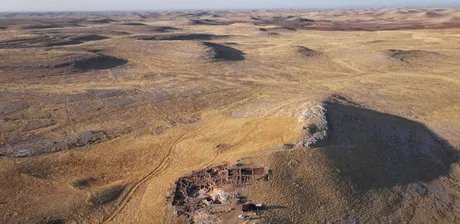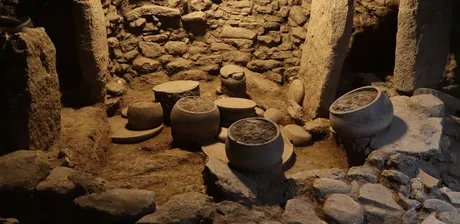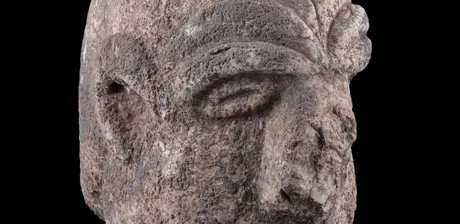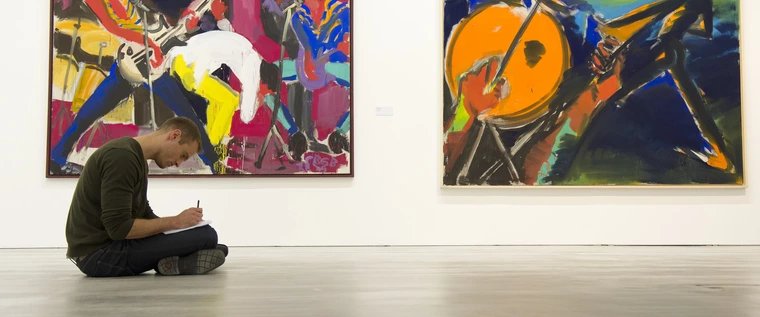
Göbeklitepe, Taş Tepeler, and life 12,000 years ago
12,000 years ago, hunters and gatherers created monumental structures in what is now Türkiye - archaeologists are still busy deciphering these buildings and works of art today. In collaboration with Türkiye, spectacular archaeological finds from Göbeklitepe and other sites in the area are now being brought to Museum Island Berlin.
With huge statues, monumental buildings and massive figuratively decorated T-pillars - stylized human images up to six meters high - the world of the hunter-gatherers 12,000 years ago at the transition to sedentary life is full of fascinating images and symbols.
Who created them and what do they mean?
Long before Stonehenge was erected or the first pyramids built, the first sedentary communities in the province of Şanlıurfa in the southeast of Türkiye created unique monumental buildings with fantastic larger-than-life sculptures in Göbeklitepe, a UNESCO World Heritage Site since 2018, and in other places.
The enormous buildings and artistic expression are to be understood as the work of communities that formed with the beginning of sedentarization. Cohesion was an important factor in the life of the groups and their resilience under changing conditions. Since 2020, spectacular discoveries made by the international research project Taş Tepeler in places such as Karahantepe, Sayburç and Çakmaktepe have painted a comprehensive picture of this revolutionary era.
The exhibition in the James-Simon-Galerie shows pictorial works, everyday objects and jewelry that tell of people living together during this historical upheaval.
Archaeological finds and architectural reconstructions are complemented by contemporary photographic interpretations by Spanish photo artist Isabel Muñoz and invite visitors to immerse themselves in life at the transition from hunter-gatherer cultures to sedentarism.
"Built community. Göbeklitepe, Taş Tepeler and Life 12,000 Years Ago" was developed by a team led by Barbara Helwing, Vorderasiatisches Museum, and Necmi Karul, Istanbul University, and is a collaboration between the Vorderasiatisches Museum, the Şanlıurfa Archaeological Museum and the "Taş Tepeler" research project at Istanbul University, with the support of the German Archaeological Institute. Most of the archaeological objects from the Şanlıurfa Museum are on display abroad for the first time.
- The exhibition is made possible with funds from the Deutsche Stiftung Klassenlotterie, the Board of Trustees of the Stiftung Preußischer Kulturbesitz, the Freunde der Antike auf der Museumsinsel e.V. and the SPK's own funds.
- An illustrated book accompanying the exhibition will be available in German, Turkish and English.
- A special exhibition of the Vorderasiatisches Museum of the Staatliche Museen zu Berlin in cooperation with the Archaeological Museum Şanlıurfa and the University of Istanbul








